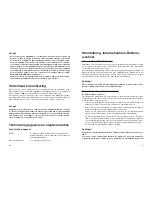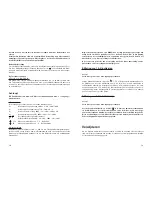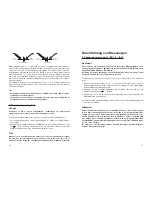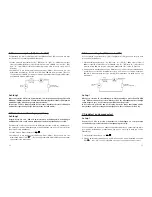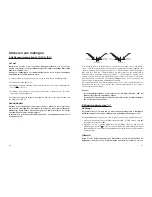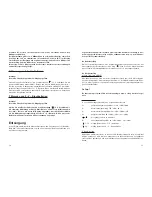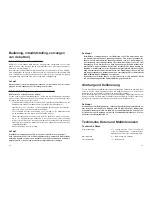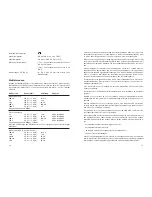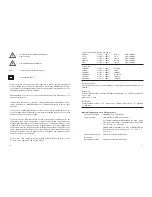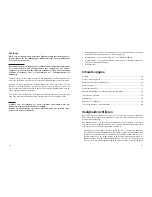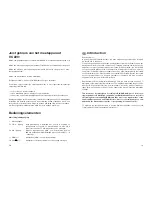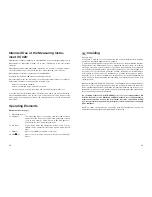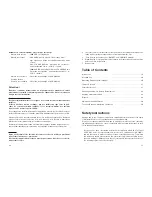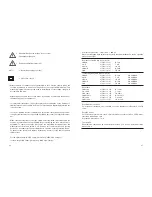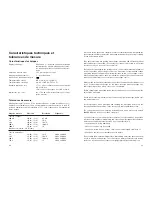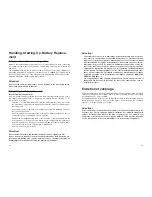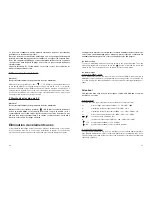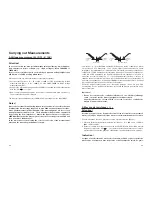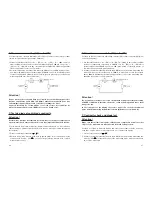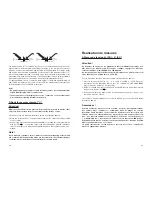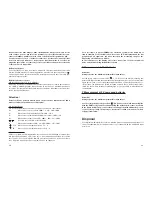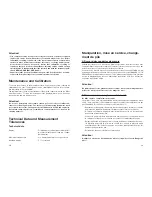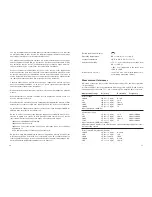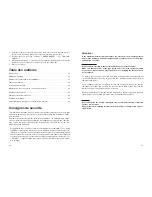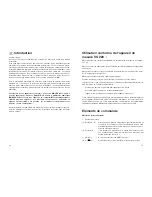
46
Caractéristiques techniques et
tolérances de mesure
Caractéristiques techniques
Display (affichage)
: Affichage à 3
1
/
2
positions 1999 avec affichage
automatique de polarité, affichages de symbo-
les, d'unités de mesure et affectations des rac-
cords
Vitesse de mesure maxi.
: 2 à 3 mesures par seconde
Affichage de dépassement
: "1 ." pour Overload
Indication de changement de pile : "
"
Température de service
: 0°C à +40°C (32 °F à 104°F)
Température de stockage
: -10°C à +50°C (14°F à 122°F)
Humidité relative de l’air
: < 75 %, sans condensation dans une plage de
0°C à +30°C ou
< 50%, sans condensation de +30°C à +40°C
Dimensions (L x l x H)
: env. 179 x 88 x 39 mm (avec étui, sans condui-
tes de mesure)
Tolérances de mesure
Affichage de la précision en ± (% de la valeur affichée + nombre de chiffres = chf.) )
La précision est valable pour 1 an à une température comprise entre +18°C et 28 °C,
pour une humidité rel. de l'air inférieure à 75 %, sans condensation. L'échauffement
dure 1 minute
Plage de mesure
Précision
Résolution
Fréquence
Tension continue
200 mV
±(0,6% + 5 ch)
0,1 mV
2 V
±(0,6% + 5 ch)
1 mV
20 V
±(0,6% + 5 ch)
10 mV
200 V
±(0,6% + 5 ch)
100 mV
1000 V
±(1,0% + 5 ch)
1 V
Impédance d’entrée : 10 M ohms
Tension alternative :
2 V
±(1,0% + 5 ch)
1 mV
40 Hz à 400 Hz
20 V
±(1,0% + 5 ch)
10 mV
40 Hz à 400 Hz
200 V
±(1,0% + 5 ch)
100 mV
40 Hz à 400 Hz
750 V
±(1,2% + 5 ch)
1 V
40 Hz à 400 Hz
+
-
23
Close and fasten the hosing carefully in reverse order after having completed the
fuse replacement. Only operate the measuring instrument if the housing is reliably
closed and screwed down.
- Take particular care when dealing with voltages exceeding 30V alternating current
(AC) or 60V direct current (DC). Even at these voltages it is possible to get a fatal
electric shock if you touch electric conductors.
Therefore, first de-energise the voltage source, connect the measuring instrument
to the connections at the voltage source to be measured, set the required voltage
measuring range at the measuring instrument, then switch on the voltage source.
When the measurement has been completed, de-energise the voltage source and
remove the cables from the connections at the voltage source.
- Always make sure before measuring voltages that the measuring instrument is not
set to a current measuring range. At the latest, reset the measuring range if an
audio signal indicating a wrong connection is generated.
- Before changing the measuring range, the test prods have to be removed from the
object to be measured.
- Check your measuring instrument or your measuring lines for damage before star-
ting a measurement.
- For safety reasons, when measuring and charging the measuring device only use
the supplied measuring cables. These are the only cables permitted for use.
- The voltage between the measuring instrument and earth must never exceed
500VDC/VACrms in the over-voltage category II.
- If you have reasons to assume that safe operation is not possible any longer, then
disconnect the appliance immediately and secure it against inadvertent operation.
It must be assumed that safe operation is no longer possible, if
- the instrument is visibly damaged,
- it does not function any longer and
- it has been stored for long periods of time under unfavourable conditions or
- it has been subject to considerable stress in transit.
- Do not switch the measuring instrument on immediately after it has been taken from
a cold to a warm environment. The condensation water generated could destroy
the device. Allow the device to reach room temperature before switching it on.

